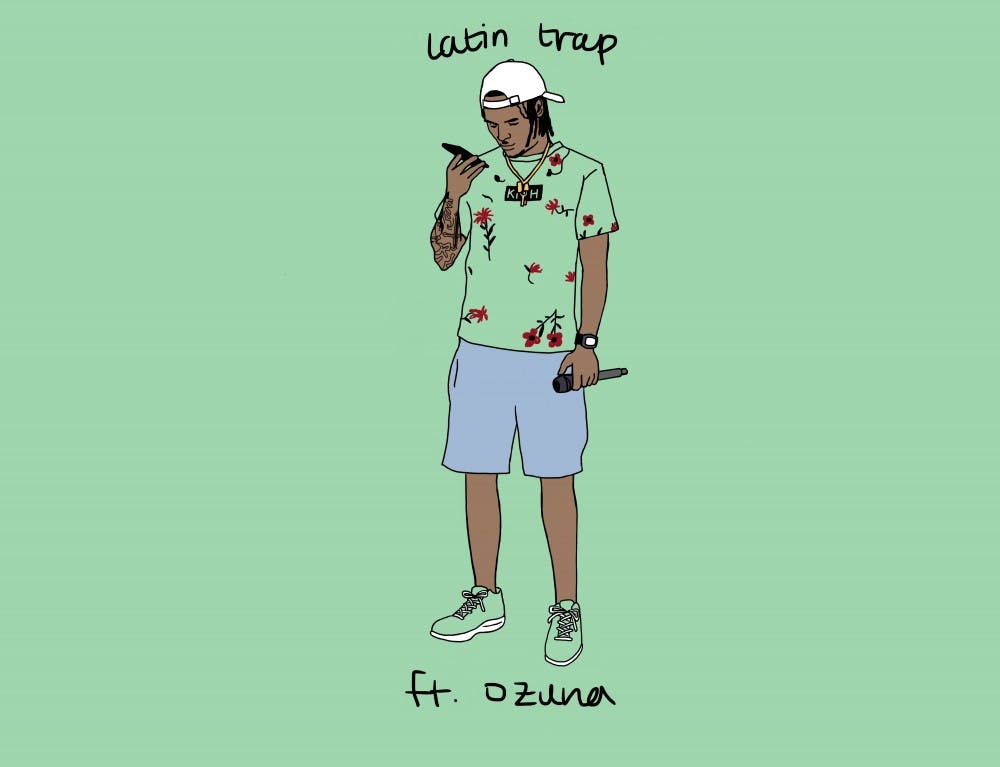You’ve heard these bangers blasting out of Uber windows at 2 a.m., at your local clubs, and at parties on the more international end of the spectrum; a blend of reggaeton and American trap is blowing up worldwide. Even if you don’t keep up with Latin artists, you’ve definitely heard them over the radio or featured in songs by prominent North American artists such as Cardi B, Tekashi 6ix9ine, and Justin Bieber.
Latin trap has been on the rise in recent years, starting to first reach widespread audiences around three years ago, when “La Ocasion” by De la Ghetto, Arcangel, Ozuna, and Anuel AA hit the radio. But it was Bad Bunny’s “Soy Peor,” released in December of 2016, that landed the final blow and placed Latin trap in the Latin American music canon. Since then, it has been infecting the ears of Latino listeners and slowly creeping onto the global audience’s radar.
The impact reggaeton and Latin pop have had on western music in recent years is undeniable, with the infamous "Despacito" dominating the airwaves in the summer of 2017 and holding the record for longest–running number one single on Billboard’s top 100, ever. Latin rhythms have also been popping up in music by artists as big as Drake, Justin Bieber, and Calvin Harris. But out of all Latin American genres, none has grown as rapidly as “trap en español,” a subgenre that currently holds four songs on Spotify’s global top 50.
Latin trap’s origins have been widely debated. Some artists, like Ozuna, claim that it started as early as the mid–2000s, with songs like “El Pistolon” by Yaga & Mackie. The track features a triplet–based piano instrumental and that lush singing–rapping blend of delivery that’s characteristic of reggaeton. Others say that it started with American–born Latino artists like Messiah in 2014, best known in the US for the Latina trap remix of "Bodak Yellow." Regardless of its origins, the genre has been growing exponentially in Latin America and converting previously reggaeton–exclusive artists like J Balvin to this new expressive style; a song like “Si Tu Novio Te Deja Sola” demonstrates his new approach.
Part of the reason why this new sound is appealing to Latin artists is because it introduces a range of new thematic and rhythmic possibilities that were previously unavailable in reggaeton. The one common, unifying trait of reggaeton is the “dembow,” a syncopated rhythmic structure that was inherited from its roots in dancehall and Caribbean music at large. If you’ve ever listened to a song by Pitbull or Daddy Yankee, you probably know the one. By getting rid of the “dembow,” trap opens new grounds for rhythmic exploration and song structure. Instead of the typical upbeat, dance rhythm we’ve heard a million times before, we’re starting to get a more laid–back, colder flow, and more varied, hi–fi production.
But rhythm wasn’t the only thing holding back reggaetoneros. Most of Reggaeton is typified by ballad–like lyrics about love and passion. Artists, such as Farruko, believe that this new musical style allows for more open, direct communication of the artists’ lives as they are right now. As he said in an interview with Billboard, “with trap, I feel the liberty to express myself how I really am. The public identifies with the songs, it identifies with what we’re living daily.”
And it is this very shift in direction that has led to more frequent collaborations between Latin and American hip hop artists. Their shared footing in similar lyrical and musical grounds brings forth an alliance that defies cultural and linguistic barriers. For the most part, these collaborations happen when American artists jump in on the remix of their southern neighbors’ already popular songs and vice versa, like in the case of Nicki Minaj’s feature on "Krippy Kush (Remix),"or Almighty’s feature on the Spanish remix of Panda. But, there are a few noteworthy cases of Latin trap artists showing up in their American counterparts’ bigger singles, a recent example being J Balvin and Bad Bunny blessing Cardi B’s “I Like It” with lyrics that are punchy and clever, even if most of its listeners don’t understand them. A Bad Bunny–Drake collaboration is also rumored to be coming out soon, so keep an ear to the ground.
Even though we are seeing a definitive shift in orientation, trap has not abandoned its Latin roots. One of the main things that sets the Latin iteration of the trap movement apart from its Western counterparts is the huge repertoire of South American styles it has at its disposal: Salsa’s syncopated cymbals, Latin folk’s bittersweet brasses and, of course, old school reggaeton’s dry, lyrical energy are all referenced and cycled countlessly.
The influence of the Latin American tradition on trap is made evident by its use of samples. Songs like “Tu No Metes Cabra” by Bad Bunny show the realm of possibilities that arise from interacting with these collections that had never before been used for the purpose of sampling. The song’s sample of Hector el Father’s Reggaeton classic “Esta Noche de Travesura” gives us a taste of the many things that are to come.
Latin trap still has a long way to go. It falls victim to many of the genre trappings that you’re hearing in pop music today. Still, it’s a budding genre that resonates with global audiences, lends itself to more experimentation, and has a repertoire of sounds ready at its disposal. Also, it bops.
Get ready; Latin trap is on the rise, and it’s not going anywhere soon.

